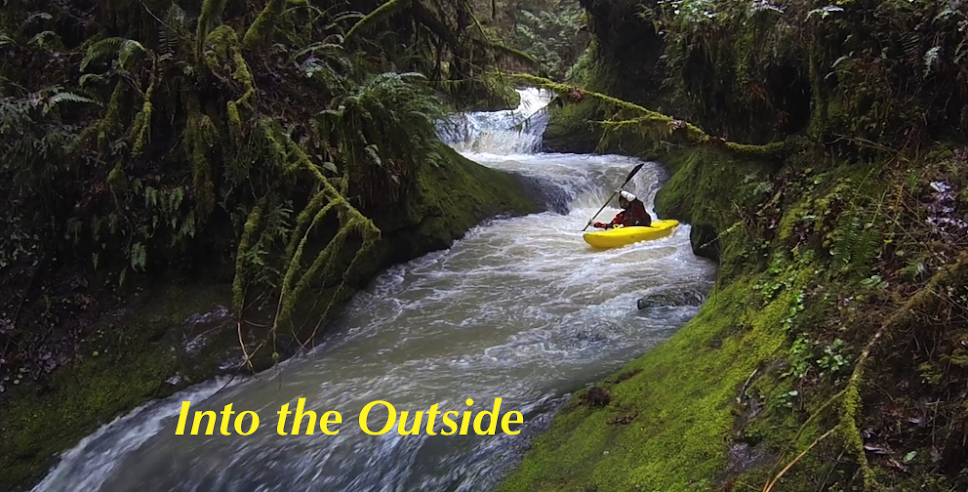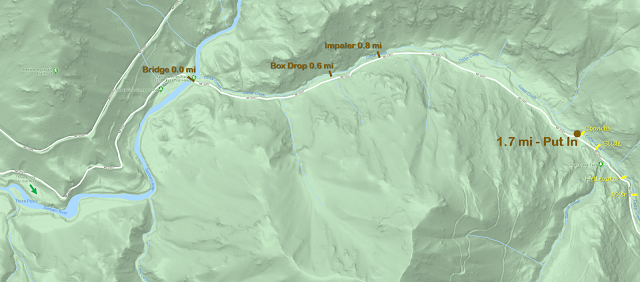If you would ever like to add Skamania Mines Creek onto a day at Hagen, you may find the following access information useful.
I would recommend parking here 45.7028, -122.2234. This location is just barely over two miles past the road that leaves Skamania Mines Rd to access the Hagen put in.
Get into the older trees and follow the ridge line down to the creek. The distance is the same as the hike into Hagen used to be before the new access was found, except that instead of a clear cut its mostly forest and ferns so the going is easier.
This hike drops you in right above the gorge (used loosely) on Skamania Mines Creek. This gorge has a long set of bedrock ledges that stack up to create a rapid reminiscent of a longer and more involved Euphoria.
Park at the circle, walk where the line is to get just the good and avoid the wood.
The reason to put in here is the mile above the gorge is mostly wood portaging (walking along the bank is easy though) and blind class III corners, which we didn't feel was worth paddling.
We did not use the put in described above and found that in the mile above the gorge there was quite a few wood issues.
Ross putting in below the previous portage, and Ben getting to shore above the next one.
Nick and Priscilla were not impressed with the quality of the stream this high up and decided to walk out and save their energy for Hagen.
Less than a mile after putting in we reached an island, just below this island the creek turned to bedrock and produced a fun series of features that linked together into a good stretch of whitewater. The alternate hike in would drop you right at the start of this bedrock.
Ross makes the first move as the bedrock starts up (just below the alternate access point).
Ross runs the next rapid that Ben signaled us through. After catching an eddy on the right just below this rapid we went for an extended scout on the right.
Ben balancing on a submerged log at the crux of our scout (not necessary if you scout river left or high on the right).
This rapid turned out to be a fun multi-move rapid with some puffy hydraulics and fun boofs, we felt it was like a more involved and longer Euphoria.
It continues around the corner.
Ben nearing the end of the Gorge rapid.
Below this rapid we caught an eddy on the right to scout Mike's Slide, which had a couple more fun moves.
The eddy between the gorge rapid and Mike's Slide.
Ben cruising below Mike's slide.
Just below Mike's Slide was a river wide tree, then the confluence with the NW Fork Washougal. Below the confluence we had no more wood issues.
Just below the confluence.
From here to the take out bridge is just over a mile of fun class III-IV similar to other stretches of the NW fork with a hole visible from the take out bridge that is best run center-right.
Once the bridge is reached there is the option to take out, continue down the NW Fork Washougal, or do what we did and head up to Hagen whose put in is less than a half mile away.
Priscilla's first lap on Euphoria.
Ben gets gnarly at The Cracken.
We were there on November 14th and felt the flow was at a nice medium level.
Check out the story of the first descent from Oregon Kayaking.
-jacob




































































